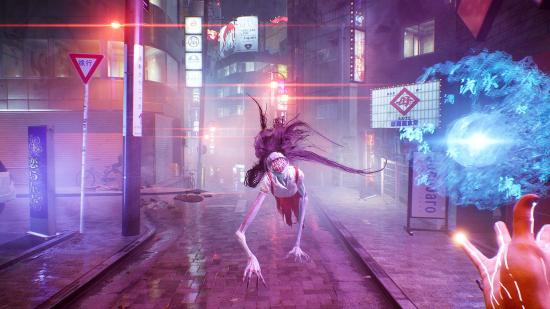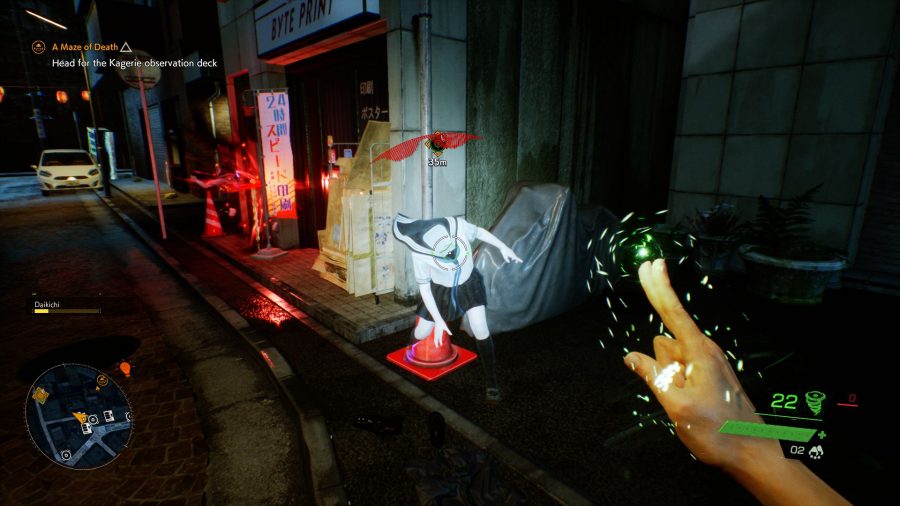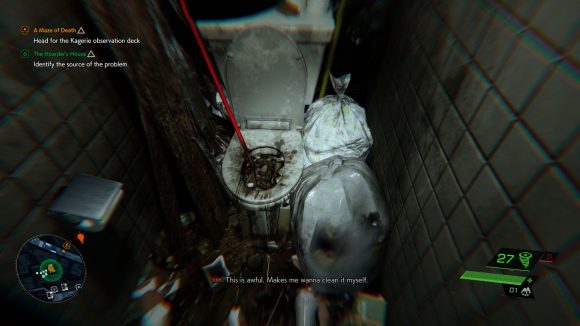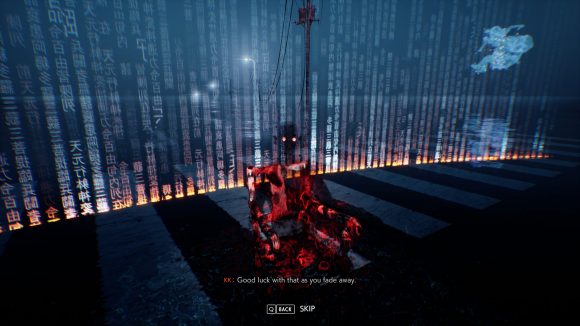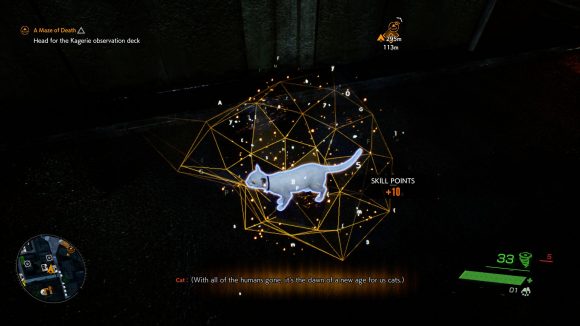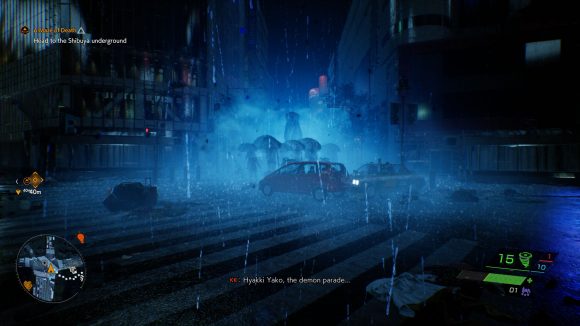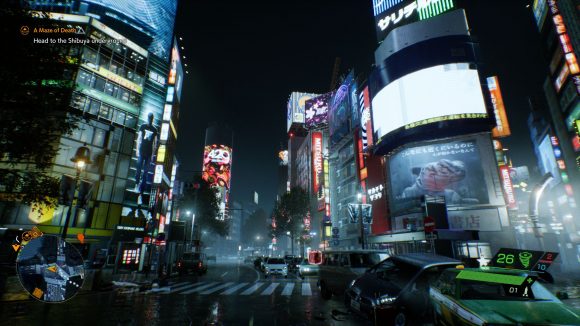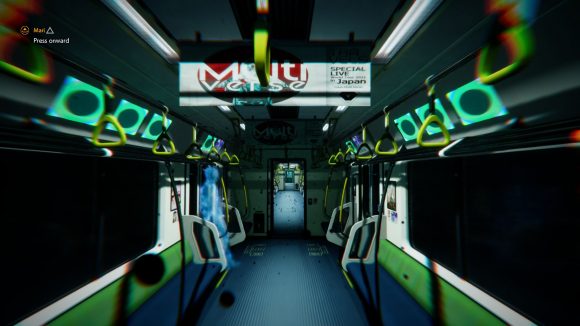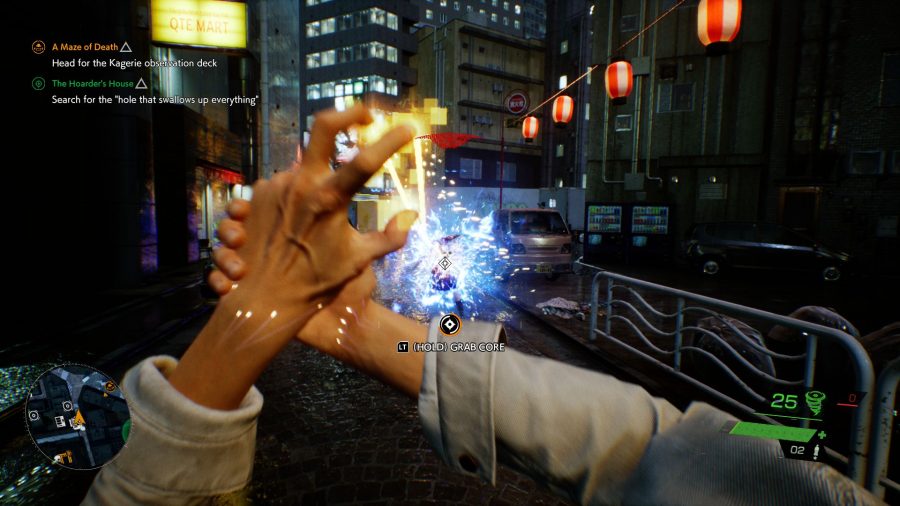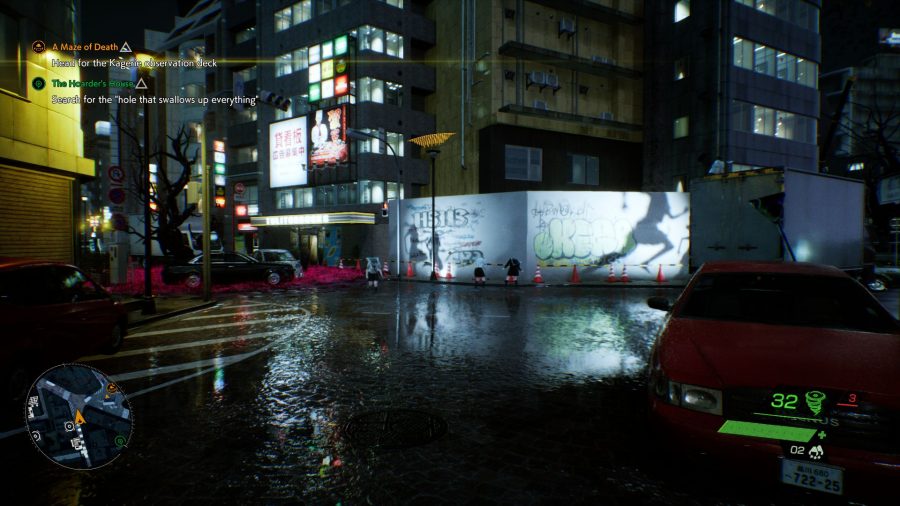Our Verdict
The main story soon falls into repetition, and its side content is bloated with busywork, but exploring and fighting your way through Tango’s eerie, detailed rendition of Shibuya is where Ghostwire: Tokyo shines.
Every ten minutes at Tokyo’s Shibuya Crossing, over 7,000 pedestrians wait for the signal before flooding the crosswalk like crashing waves. The first loading screen of Ghostwire: Tokyo – which you can buy here, coincidentally – tells me it’s one of Japan’s most recognisable landmarks. Not Mount Fuji, or Osaka Castle, but this strange phenomenon of modern city planning. Thousands of people, on thousands of individual journeys, side by side, waiting for the lights to change.
I’ll go on to spend most of the game melting manifestations of Ikumi Nakamura’s cursed sketchbooks with hand lasers, like Palpatine in athleisure. But this loading screen factoid is the game showing its hand early and deliberately; at its heart, this is a story about metropolitan alienation and uncanny modernity first, ghostbusting second.
And Ghostwire’s heart is worth taking a stethoscope to, because it’s a big one, and while peculiar, it beats with an enchanting rhythm. This is probably the warmest big-budget horror game ever made – it’s as welcoming as it is creepy. Side quests see me crawling past faceless, thin apparitions that stop and start like broken toys, only to discover a tanuki disguised as a vending machine, or helping the soul of a resident find rest in the netherworld, or ambushing a hopping umbrella.
Every footstep forward in developer Tango Gameworks previous game, Evil Within, felt like wading through a nightmare, but bounding through Shibuya is almost frictionless. It’s more of an open city district than the sprawling landmasses that make up other open-world games, and the ward of Shibuya is recreated in such detail that it doubles as a piece of virtual tourism.
 PC Game Pass PC Game Pass $9.99 $1.00 Buy now Network N earns commission from qualifying purchases via Microsoft and other programs.
PC Game Pass PC Game Pass $9.99 $1.00 Buy now Network N earns commission from qualifying purchases via Microsoft and other programs.
Parkour-lite movement, grappleable tengu, and ghostly gliding abilities transform the space into a vertical playground. Shibuya never exactly feels safe, but it also never makes you fear exploration. Evil Within’s protagonist, Sebastian Castellanos, gave us a box of matches and a head full of bad memories. Ghostwire: Tokyo’s lead, Akito, brings a tourist brochure and a spring in his step.
Whether you’re exploring or fighting across the city, Akito uses Ethereal Weaving, a set of supernatural abilities granted by his spirit pal, KK, who lives in his head. Possession is too nefarious a word for the vibe here, though. KK isn’t some evil puppet master, instead he’s doing the psychological equivalent of sleeping on Akito’s couch and eating all his cereal. Akito still keeps his personality, and the buddy cop act between the two shines a little levity through the eerie light pollution and dim subterranean tunnels. It’s not an entirely take-take relationship – KK’s elemental powers comprise the core of Akito’s arsenal.
Here’s what combat is like in Ghostwire. Shibuya’s silence, occasionally broken by snatches of jazz from a storefront, is halted by the shuffling of Rain Walkers; stick-thin spirits in suits brandishing ragged umbrellas. You might throw down a talisman as you advance, conjuring a spectral bush to hide behind, from which you fire off an arrow for a silent takedown. That leaves one Rain Walker left, which you sneak up behind and wrench out its glowing core for a dazzling stealth kill.
Suddenly, you’re set upon by a pack of headless students, so you drop a stun talisman to slow their jittering, rapid approach. From here, it’s up to you to choose an elemental weave. Wind for rapid blasts, water for wide crowd-control arcs, or fire for devastating explosions, each with charged variants. It feels and looks fantastic, rewarding strafing and well-timed projectile parries with crucial openings in which you can land your best shots. It’s clearly designed for a controller, with generous auto-aim and rhythms that reward mobility over accuracy. Not everything has a head to shoot, after all.
There’s a kid-like charm about pointing finger guns at ghosts and cat-cradling their glowing innards out of existence, like weaponised playground game rituals, and this sense of fluid playfulness is where combat finds its stride.
Occasionally, KK and Akito get separated, resulting in scenes of survival horror-inspired disempowerment, and here Tango’s lineage of immaculately paced tension is on full display. Most of the time, though, Akito is a superhero. He’s always the most dangerous combatant in the arena, at least until you get distracted by just how much fun it is to watch some of these enemies simply move around, with their flicker book tempos and gangly limbs.
Unfortunately, the vibrancy and creativity of Shibuya’s inhabitants clash with the many utilitarian check lists employed to populate it. There are innumerable collectible spirits and upgrade materials, prayer beads that boost your skills, antiques to sell to cat vendors, and gates to cleanse, which open up more of the map. It’s not boring enough to constitute busywork, but consider where you fall on the scale of ‘tedious’ to ‘meditative’ in regards to this sort of frequent repetition if you’re still on the fence about this ghost game.
What is undeniably tedious are the needlessly elaborate animations Akito performs when collecting spirits or cleansing curses, which are interactions you’ll repeat hundreds of times. I’m not sure when exactly ‘prestige game development’ got equated with ‘making the player hold down a button on a bucking controller to fill up a circle’, but generally, when I press a button to make a thing happen, I’d like that thing to happen somewhere in the region of immediately. What’s worse, Ghostwire knows how tedious this is, as there’s an upgrade you can invest in to shave the animation down to a bearable length.
Trying to engage with main missions and side content at an equal pace results in a jarring loop that pulls me between investment and disinterest every twenty minutes or so. Encountering foes naturally in Shibuya’s streets, with all the freedom of approach and variety they afford, is thrilling. However, being sucked into pocket dimension arena-battles against waves of spirits is a bit dull.
Shibuya’s best side missions send you through a metropolitan labyrinth of creepypastas, urban legends, and ghost stories. As a portrayal of trauma in the collective consciousness of a city, Ghostwire is consistently evocative, but as a more focused story about family trauma, it’s far less so. Cutscenes drag and emotive beats feel forced. Ghostwire does small stories so well that all this energy spent trying to tell a big one feels wasted.
Indeed, Ghostwire often feels like an indie wearily adopting the trappings of a blockbuster out of obligation. The result is bloat and bombast that just ends up obscuring the beautiful oddness it does so well. I guess checklists and towers are the price you pay to look this good, and make no mistake, this is a gorgeous game. Not just technically, either. Ghostwire boasts Tango’s most arresting and creative environmental manipulation to date.
So, again, consider your tolerance for busywork, repetition, and a thin critical path before taking the plunge here. But there are plenty of thrills to be had in Shibuya, sights to see, and stories to find. I think it’ll be well worth it, for some of you at least, to get past the creaky machine, just to spend some time with the shimmering, wonderfully creative ghost inside.
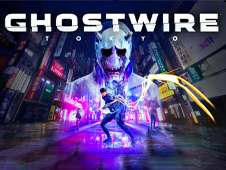 Ghostwire: Tokyo Ghostwire: Tokyo $59.99 $53.99 Buy now Network N earns affiliate commission from qualifying sales.
Ghostwire: Tokyo Ghostwire: Tokyo $59.99 $53.99 Buy now Network N earns affiliate commission from qualifying sales.
